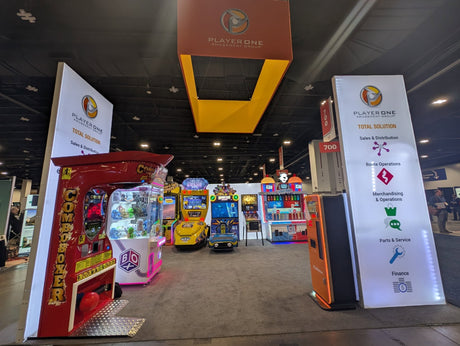Une installation électrique performante est essentielle pour les propriétaires de salles de jeux, les centres de loisirs familiaux (CAF) et les nouveaux exploitants de salles de jeux qui cherchent à optimiser les performances , à réduire les temps d'arrêt et à garantir la sécurité . Que vous ouvriez une nouvelle salle de jeux, agrandissiez votre établissement ou modernisiez l'infrastructure électrique de votre salle de jeux, ce blog présente les meilleures pratiques d'installation électrique, les considérations de câblage et des conseils de gestion de l'énergie pour assurer le bon fonctionnement de votre entreprise.
Avis de non-responsabilité : Ce blog est fourni à titre informatif uniquement. Les travaux électriques doivent toujours être effectués par un électricien agréé afin de garantir la conformité aux codes du bâtiment et aux réglementations de sécurité locales.
Comment calculer les besoins en énergie d'une salle de jeux ou d'un centre de divertissement familial
Avant de poser des lignes électriques, vous devez déterminer la demande électrique totale de votre salle de jeux afin d'éviter les surcharges et les inefficacités.
Étapes clés pour calculer les besoins énergétiques :
- Vérifiez la consommation électrique de chaque jeu – La plupart des bornes d’arcade fonctionnent sur 120 V (Amérique du Nord), tandis que certaines nécessitent 240 V.
- Tenez compte de l’utilisation de pointe : plusieurs machines fonctionnant simultanément peuvent provoquer des pics de puissance.
- Tenez compte des systèmes supplémentaires : le CVC, l’éclairage, les attractions de réalité virtuelle et les bornes d’échange contribuent tous à la consommation énergétique globale.
Il est fortement recommandé de consulter un électricien agréé ou un expert en arcade (comme P1AG) pour créer un plan de distribution électrique personnalisé pour votre espace.
Meilleure disposition de circuit électrique pour une salle d'arcade ou de jeux
Pour éviter les temps d'arrêt, les surtensions et l'usure inutile des machines, les circuits d'arcade doivent être conçus de manière stratégique pour l'équilibrage de la charge, l'évolutivité et la sécurité.
Comment configurer les circuits d'alimentation pour une salle d'arcade :
- Utilisez des circuits dédiés pour les machines à forte consommation – Les configurations VR, les flippers et les simulateurs de mouvement nécessitent des circuits dédiés de 20 A pour éviter les surtensions.
- Équilibrez la charge électrique sur les circuits – Évitez les surcharges en répartissant uniformément les machines à haute énergie sur plusieurs circuits.
- Assurez une alimentation de secours pour les systèmes essentiels – les systèmes de point de vente, les bornes d’échange de prix et les lecteurs de cartes doivent être connectés à un onduleur (alimentation sans interruption) pour se protéger contre les fluctuations de puissance.
Une planification appropriée des circuits permet d'éviter les pannes de machines, les déclenchements de disjoncteurs et les pertes de revenus dues aux temps d'arrêt.
Pose de lignes électriques dans une salle de jeux : prises de courant au sol ou en hauteur
L’une des décisions les plus importantes dans la distribution de l’énergie électrique d’une salle d’arcade est de savoir comment acheminer les lignes électriques vers chaque jeu.
Quelle configuration d'alimentation est la meilleure pour votre salle d'arcade ?
Prises de courant au sol(Idéal pour le placement permanent du jeu) |
Chutes de courant aériennes(Idéal pour les configurations d'arcade flexibles) |
| ✔ Idéal pour les salles d'arcade à disposition fixe ✔ Le câblage dissimulé réduit les risques de trébuchement ✔ Nécessite un creusement de tranchées ou un conduit préinstallé pendant la construction |
✔ Idéal pour les salles d'arcade modulaires où les jeux se déplacent fréquemment ✔ Utilise des prises montées au plafond avec des cordons d'alimentation rétractables ✔ Empêche les dommages causés par la circulation piétonnière, mais peut nécessiter des câbles plus longs |
Si vous utilisez des prises de courant aériennes, installez des enrouleurs rétractables pour garder les câbles bien rangés et éviter que les fils suspendus n'interfèrent avec le jeu.
Choisir le bon câblage électrique et les bonnes prises pour une salle d'arcade
Choisir le bon calibre de câblage, les bonnes prises et la bonne protection contre les surtensions est essentiel pour la sécurité, les performances et les économies de coûts à long terme de l'arcade.
Essentiels du câblage et des prises d'arcade :
- Utilisez un fil 12 AWG pour les circuits standard 20 A – Cela prend en charge la plupart des jeux d’arcade.
- Optez pour un câblage 10 AWG pour les machines à haute puissance – Les jeux à charge élevée et les configurations VR nécessitent un câblage plus épais.
- Installez des prises de qualité commerciale NEMA 5-15R (15 A) – Standard pour la plupart des jeux NEMA 5-20R (20 A) – Requis pour les machines à haute énergie
- Parasurtenseurs pour tout le bâtiment – Essentiels pour protéger les machines contre les pics électriques qui peuvent entraîner des réparations coûteuses.
Un câblage incorrect ou des prises de courant de qualité inférieure augmentent les risques d’incendie, provoquent des déclenchements fréquents du disjoncteur et réduisent la durée de vie de la machine.
Erreurs électriques courantes que les propriétaires de salles d'arcade devraient éviter
De nombreux nouveaux opérateurs d’arcade commettent des erreurs électriques coûteuses qui entraînent des temps d’arrêt inattendus, des dommages aux machines et des factures d’électricité plus élevées.
Évitez ces erreurs électriques d'arcade :
- Connexion en guirlande de multiprises – La surcharge des circuits avec des rallonges est dangereuse et peut entraîner des déclenchements de disjoncteurs ou des incendies.
- Ignorer les exigences de tension – Certains jeux importés nécessitent 220 V, vérifiez donc toujours la tension avant de brancher.
- Mise à la terre par saut – Chaque machine doit être correctement mise à la terre pour éviter les chocs et les dysfonctionnements.
- Ne pas étiqueter les panneaux de disjoncteurs – Assurez-vous que chaque jeu, zone ou attraction est clairement étiqueté pour un dépannage rapide.
Assurer un système électrique bien planifié et correctement installé évite les perturbations opérationnelles et assure le bon fonctionnement de votre salle de jeux.
Préparer le système électrique de votre salle d'arcade pour l'avenir
La technologie des arcades continue d'évoluer et la mise à niveau de votre infrastructure électrique maintenant peut vous faire économiser de l'argent à long terme .
Comment assurer la pérennité de l'installation électrique d'une salle d'arcade :
- Installer un conduit électrique supplémentaire – Cela facilite l’ajout de nouvelles machines à l’avenir.
- Utilisez des compteurs intelligents pour la surveillance de l’énergie – Suivez la consommation d’énergie et détectez les inefficacités pour réduire les coûts.
- Envisagez des options d’énergie renouvelable – Certains opérateurs intègrent des panneaux solaires pour compenser la hausse des dépenses énergétiques.
Être proactif concernant les besoins électriques de votre salle de jeux garantit l'évolutivité à mesure que votre entreprise se développe.
Configurez correctement l'alimentation de votre arcade dès le départ
L'installation de lignes électriques dans une salle de jeux exige une planification minutieuse, une installation professionnelle et des stratégies d'avenir pour garantir un fonctionnement sûr, efficace et rentable. En suivant les bonnes pratiques de câblage, de planification des circuits et d'emplacement des machines, vous assurerez le bon fonctionnement de votre salle tout en évitant les problèmes électriques imprévus.
N'oubliez pas : consultez toujours un électricien agréé pour garantir la conformité aux codes électriques locaux et aux réglementations de sécurité.
Si vous cherchez à mettre à niveau votre salle d'arcade avec des jeux performants et générateurs de revenus, mais que vous souhaitez éviter des coûts initiaux importants, Player One Amusement Group propose un modèle de partage des revenus pour vous aider à vous développer sans risque.








